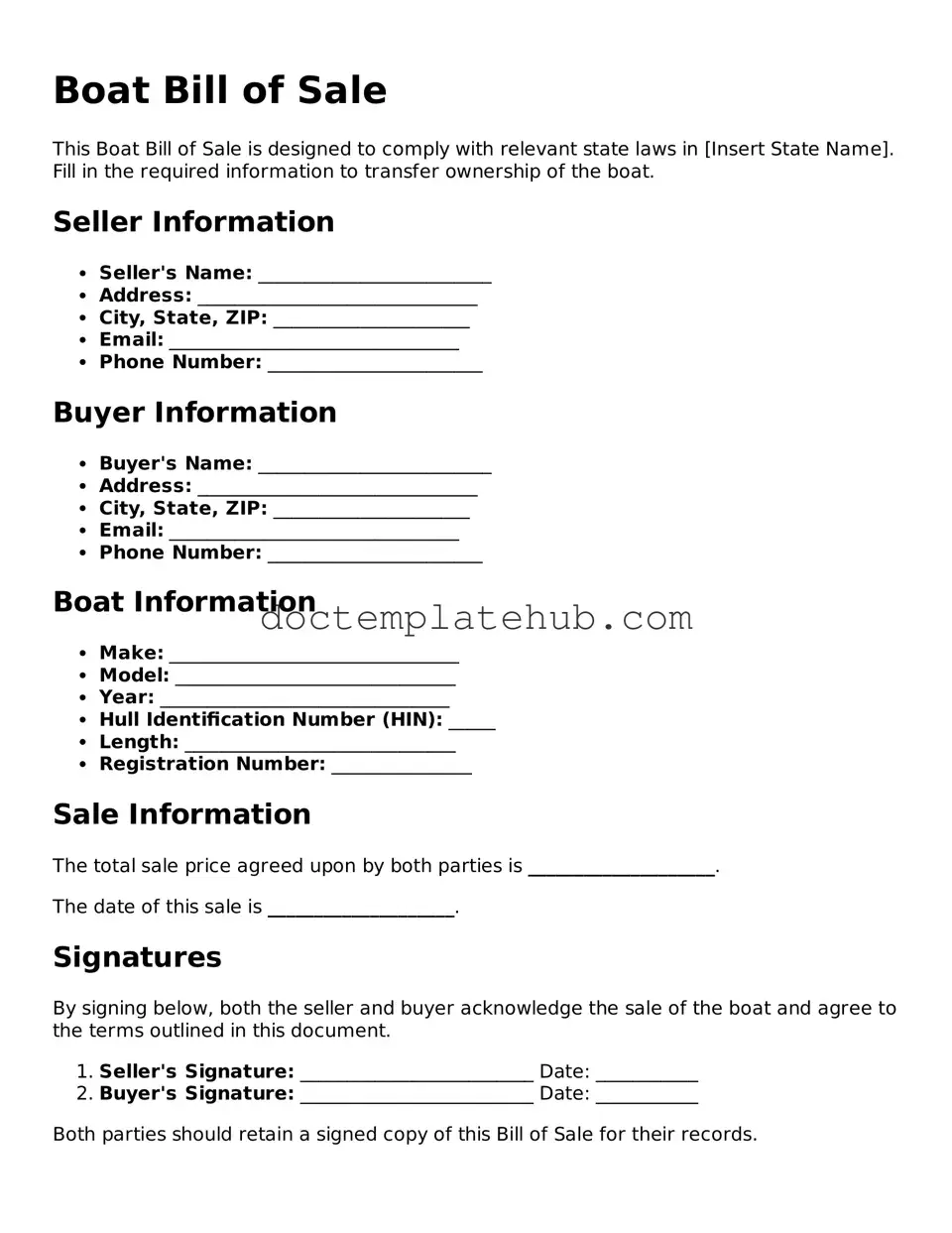What is a Boat Bill of Sale?
A Boat Bill of Sale is a legal document that records the transfer of ownership of a boat from one party to another. This document serves as proof of the transaction and includes essential details about the boat, the buyer, and the seller. It is important for both parties to have a copy for their records.
What information is included in a Boat Bill of Sale?
The Boat Bill of Sale typically includes the names and addresses of the buyer and seller, a description of the boat (such as make, model, year, and hull identification number), the sale price, and the date of the transaction. It may also contain any warranties or disclaimers regarding the condition of the boat.
Do I need to have the Boat Bill of Sale notarized?
Notarization is not always required, but it is highly recommended. Having the document notarized adds an extra layer of authenticity and can help prevent disputes in the future. Some states may require notarization for the transfer of ownership, so it’s wise to check local laws.
Is a Boat Bill of Sale required for all boat sales?
While not all states require a Boat Bill of Sale for every boat sale, it is strongly advised to use one. This document provides legal protection for both the buyer and seller and can help clarify any misunderstandings regarding the transaction.
Can I create my own Boat Bill of Sale?
Yes, you can create your own Boat Bill of Sale. However, it is important to ensure that it includes all necessary information and complies with your state’s regulations. Using a template or form can help ensure that you cover all essential details.
What should I do after completing the Boat Bill of Sale?
After completing the Boat Bill of Sale, both the buyer and seller should sign the document. Each party should keep a copy for their records. Additionally, the buyer may need to register the boat with the state and may need to provide the Bill of Sale as part of that process.
Where can I obtain a Boat Bill of Sale form?
You can obtain a Boat Bill of Sale form from various sources, including online legal document services, boating associations, or state government websites. Make sure to choose a form that is specific to your state to ensure compliance with local laws.
